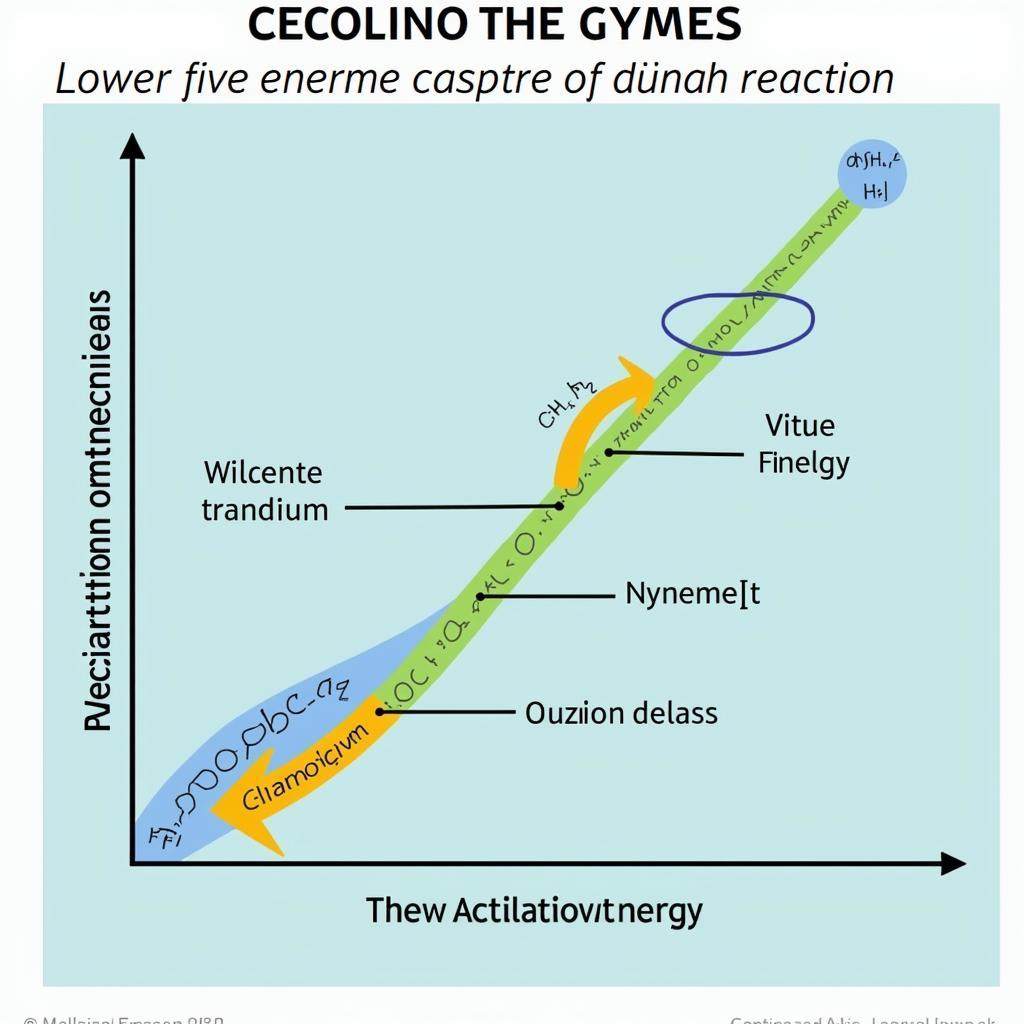Enzymes, often denoted by the suffix “-ase,” are essential biological molecules that act as catalysts, speeding up chemical reactions within living organisms without being consumed themselves. These remarkable proteins are crucial for a vast array of life processes, from digestion and metabolism to DNA replication and immune responses. Understanding what “Ase Means Enzyme” opens a window into the intricate machinery of life.  Enzyme Catalyst in Biological Reaction
Enzyme Catalyst in Biological Reaction
The Significance of “-ase”: Identifying Enzymes
The suffix “-ase” serves as a crucial identifier in biochemistry, signaling that a molecule is likely an enzyme. This naming convention helps scientists quickly recognize and categorize these vital proteins. While there are some exceptions, the vast majority of enzyme names end with “-ase”, making it a valuable tool in understanding biological processes. For example, lactase, the enzyme responsible for breaking down lactose (milk sugar), clearly indicates its function through its name. Similarly, DNA polymerase plays a key role in DNA replication, and its name immediately reveals its enzymatic nature.
Why Enzymes Matter: The Importance of Biological Catalysts
Enzymes are essential for life because they lower the activation energy required for chemical reactions to occur. Without enzymes, many of these reactions would proceed too slowly to sustain life. Think of them as the spark plugs of our cellular engines, ensuring that everything runs smoothly and efficiently.  Enzyme Function and Activation Energy
Enzyme Function and Activation Energy
Exploring Enzyme Functionality: How They Work
Enzymes are highly specific, meaning that each enzyme catalyzes only a particular reaction or a set of closely related reactions. This specificity is due to the unique three-dimensional structure of each enzyme’s active site, which is the region where the substrate (the molecule being acted upon) binds. This “lock and key” mechanism ensures that the enzyme only interacts with the correct substrate.
Factors Affecting Enzyme Activity
Enzyme activity is influenced by various factors, including temperature, pH, and substrate concentration. Each enzyme has an optimal temperature and pH at which it functions most efficiently. Deviations from these optimal conditions can denature the enzyme, altering its shape and rendering it inactive. Similarly, increasing substrate concentration generally increases enzyme activity up to a certain point, after which the enzyme becomes saturated.
A Closer Look at Enzyme Classification
Enzymes are classified into six major groups based on the type of reaction they catalyze: oxidoreductases, transferases, hydrolases, lyases, isomerases, and ligases. This classification system helps researchers organize and understand the vast array of enzymes found in nature. For instance, hydrolases are enzymes that catalyze hydrolysis reactions, involving the breaking of chemical bonds with the addition of water. 5 letter eords that end in ase helps us delve deeper into this specific category of enzymes.
Enzyme Inhibition and Regulation
Enzyme activity can be regulated through various mechanisms, including inhibition. Inhibitors are molecules that bind to enzymes and decrease their activity. This regulation is crucial for maintaining cellular homeostasis and preventing unwanted reactions. Understanding how 5letter word ending ase relates to enzyme inhibition provides further insight into enzyme function.
Enzymes in ASEAN’s Biodiversity: A Treasure Trove of Biological Catalysts
Southeast Asia’s rich biodiversity offers a vast and largely untapped resource of novel enzymes with potential applications in various industries, from biotechnology and pharmaceuticals to agriculture and food processing. Research into these enzymes could lead to the discovery of new drugs, more efficient industrial processes, and sustainable solutions to global challenges.
Conclusion: “Ase Means Enzyme” – Unlocking the Secrets of Life
Understanding that “ase means enzyme” is fundamental to appreciating the complexity and elegance of life. These biological catalysts drive countless vital processes, and their study continues to unlock crucial insights into the intricate workings of living organisms. 5 letter words starting ase can help us further explore this fascinating field and its implications.
FAQ
- What is the role of an enzyme?
- What does the suffix “-ase” indicate?
- How are enzymes classified?
- What factors affect enzyme activity?
- Why are enzymes important for life?
- How are enzymes regulated?
- What are some examples of enzymes and their functions?
Do you have any other questions related to enzymes or their role in biological systems? Check out our related articles: 5 letter word with ase in the middle and ase suffix names.
For further assistance, please contact us: Phone: 0369020373, Email: aseanmediadirectory@gmail.com or visit us at: Thon Ngoc Lien, Hiep Hoa, Bac Giang, Vietnam. We have a 24/7 customer service team.
